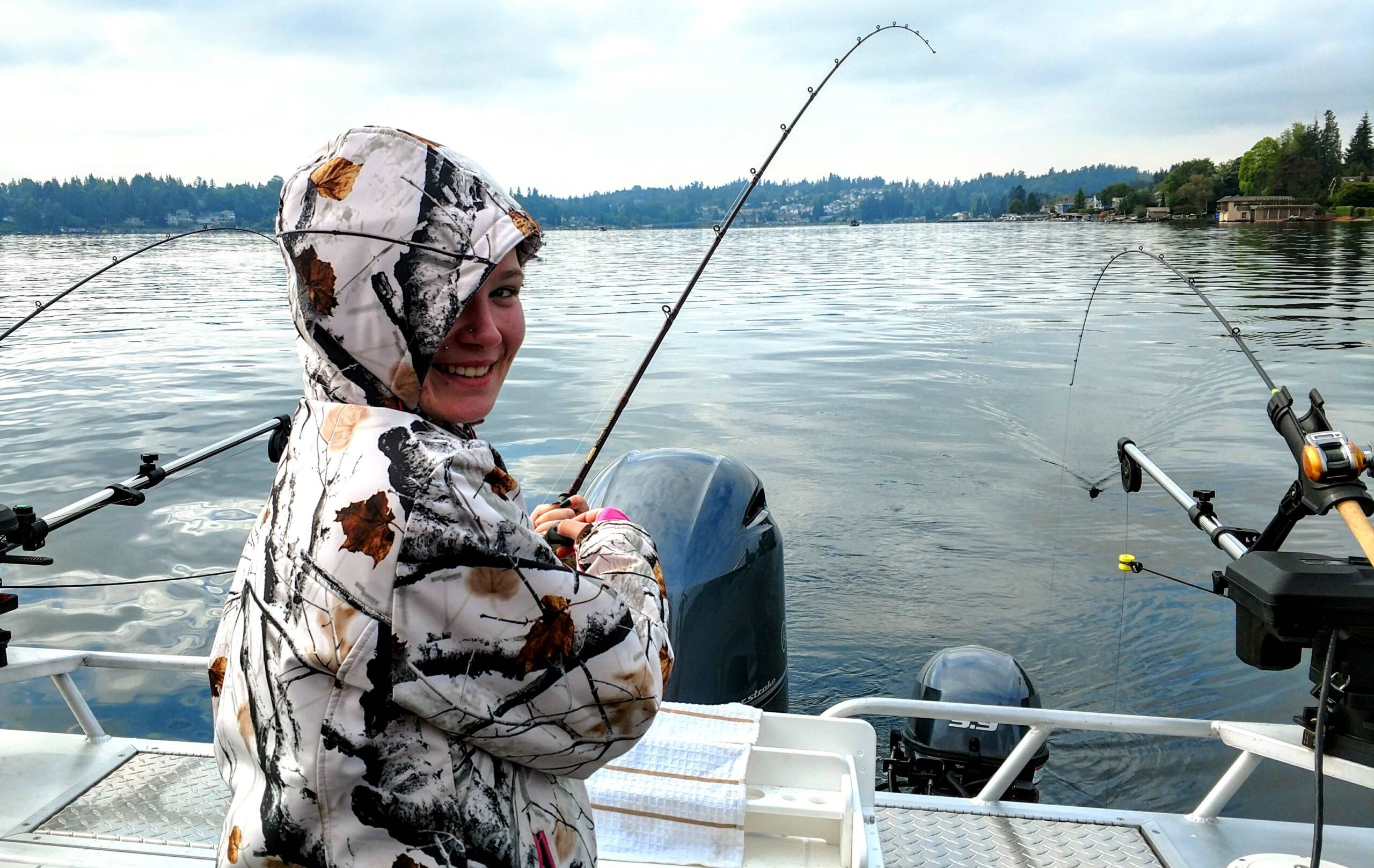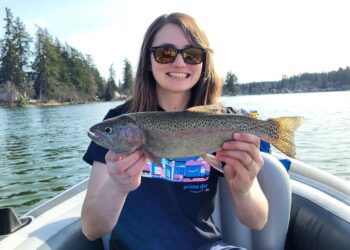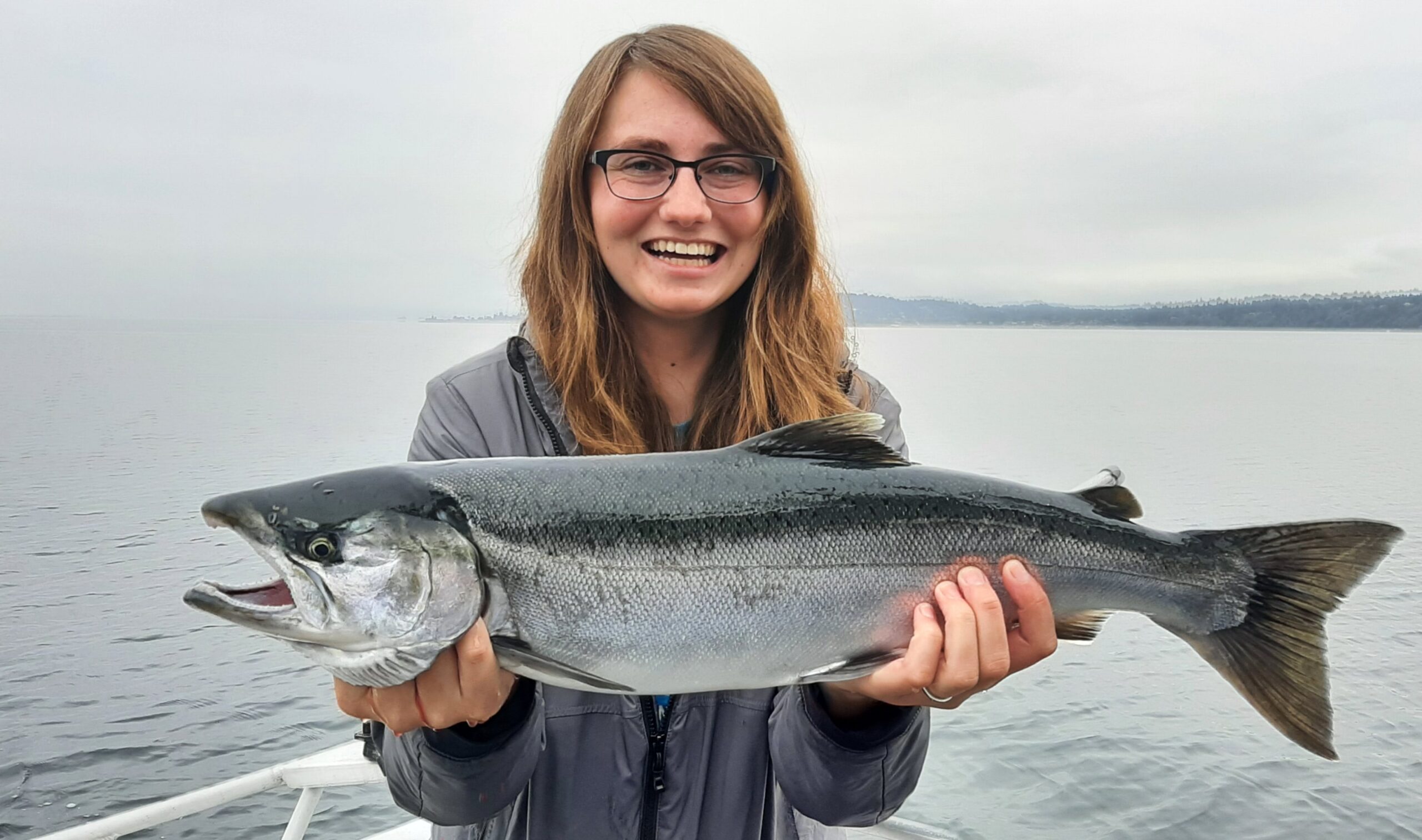Omak Lake, nestled within the picturesque landscape of Washington State, is a hidden gem for anglers seeking the thrill of catching Lahontan cutthroat trout. This expansive body of water is renowned for its crystal-clear waters and the bountiful presence of this unique trout species.
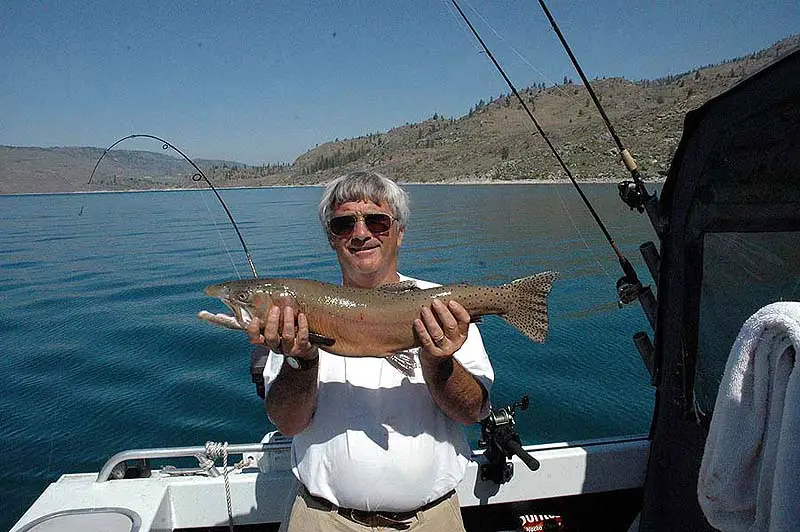
The Lahontan cutthroat trout (Oncorhynchus clarkii henshawi) is native to the Lahontan Basin of Nevada, Eastern California, and Southern Oregon. These trout are well-adapted to the alkaline and saline conditions of the region, making Omak Lake an ideal habitat. Lahontan cutthroat trout are known for their striking appearance, characterized by vivid red and orange hues along their sides and beneath their jaws. They can grow to impressive sizes, with the Washington State record at 18.04 pounds and was caught out of Omak Lake.
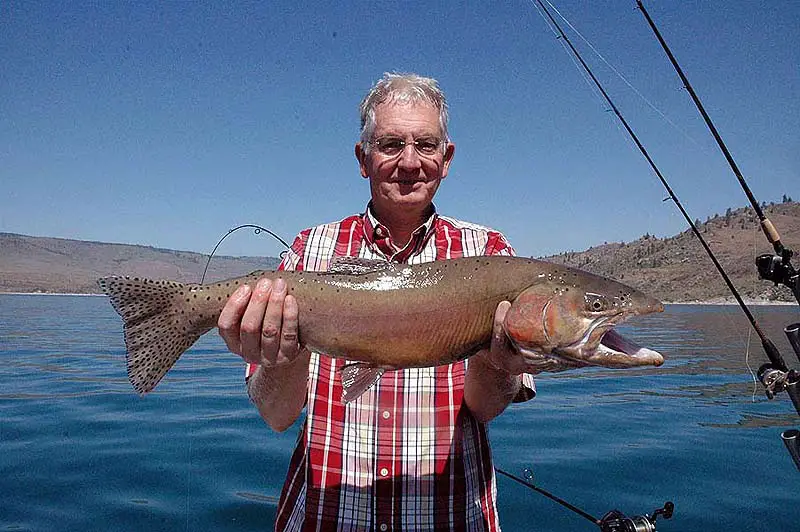
Omak Lake is located on the Colville Confederated Tribes Reservation, and is 3,244 acres, nestled in a high desert of rolling sagebrush hills. The prime fishing season at Omak Lake runs from early spring to late autumn. During these months, the water temperatures are optimal for trout activity, and the fish are more likely to be found near the surface. The early mornings and late afternoons are particularly productive times for fishing, as the trout are more active in these cooler hours
Due to its large size and regulations by the tribe that protects the shallow shorelines in the northern part of the lake during the May spawning period, this is primarily a boat fishery. As the lake begins to thaw in March and warms up through May, the regulations change from a catch and keep to a catch and release fishery, which means using fly gear or single barbless hooks on lures and no bait. Just like the other popular Lahontan waters in Washington, the fish start cruising the shallows and shorelines looking for creeks and sources of cold water for spawning.
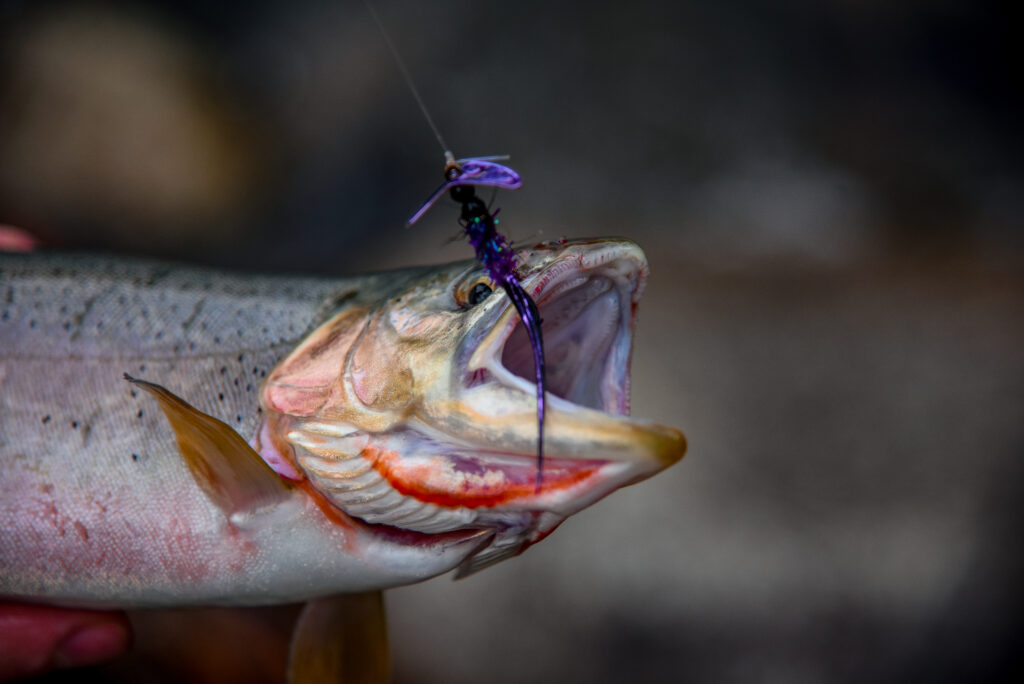
Fly rod toting anglers usually target these areas with the same standard flies for Lake Lenore, another Lahontan Cutthroat producing lake in Washington. A black or green whooly bugger in size 8 to 4, or very small bead head chironomids in sizes 14 to 18. A heavy 6-weight rod is best since fish can be measured in pounds over inches, but some anglers will use a 5-weight or even a 4-weight. Sinking lines and the ability to cast in an afternoon thermal breeze are a must.
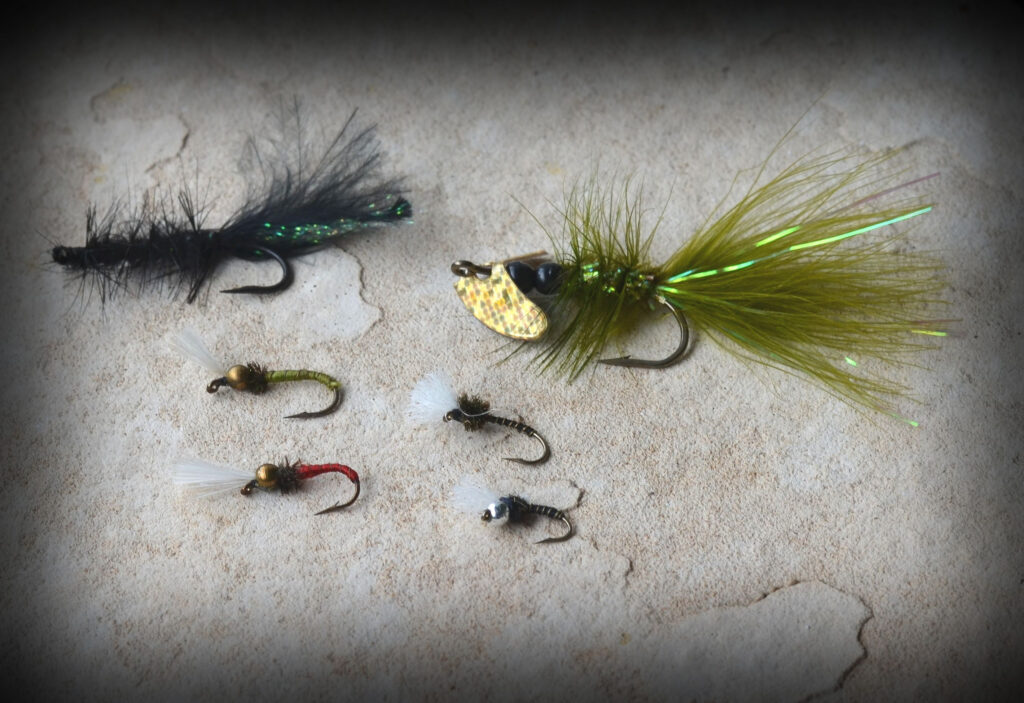

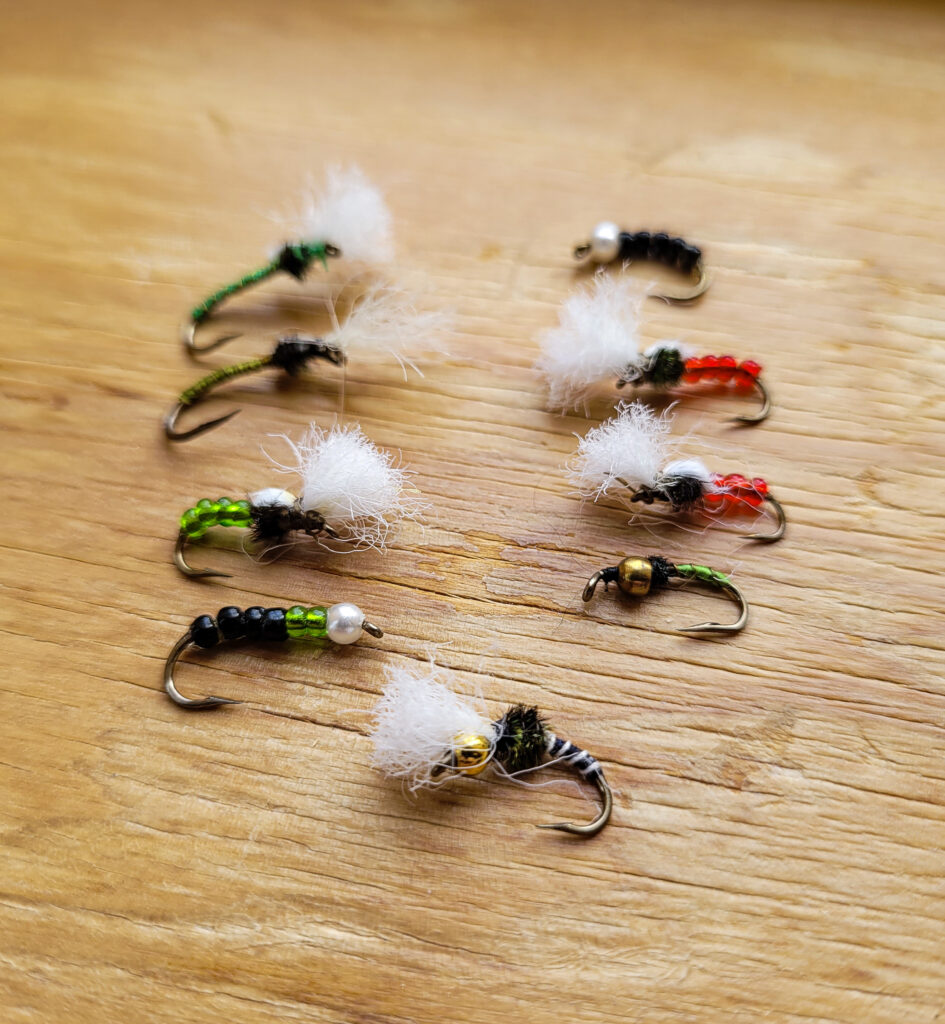
For those who prefer to use a spinning or casting rod, using lures such as spoons, spinners, and soft plastics can be highly effective. These lures mimic the movements of baitfish and can provoke aggressive strikes from predatory trout. Top producing lures to try are the Luhr-Jensen Krocodile spoon in the frog pattern and Dick Nites in silver and chartreuse. Another option is to troll the F4 Kwik Fish in a frog pattern. For both fly fishermen and gear trollers can do very well using a Smile Blade Fly by Macks Lure, which is a whooly bugger with a smile blade in front as a “go to” fly. For the gear guys, simply put a few split shots a foot or two above the fly and troll at slow speed. The fly anglers should use a slow-sinking tippet line and strip it in slowly.


Fishing for Lahontan cutthroat trout at Omak Lake is more than just a sport; it’s an experience that connects anglers with nature. The serene beauty of the lake, surrounded by rolling hills and open skies, creates a tranquil setting for a day on the water. What makes this trip to Omak Lake unique is that you are fishing a part of history.

First, the region itself should be explored. It is rich in Native American culture. In fact, Chief Joseph of the Nez Perce, who gave the famous surrendering speech “I will fight no more forever” died on the Colville Reservation in 1904 and is buried at Nespelem. The Grand Coulee Dam is bringing back its laser night show during the summer months, and just seeing this dam is worth the nearby side trip. There are also several trails to hike and, of course, the Columbia River to fish if you want to add other places to cast a line.
Omak Lake received its first plantings of Lahontan Cutthroats in 1968, which is noted in a report “Colville Lakes Compendium, Limiting Factors, and Management Plan” published by John Arterburn in 2003. These fish were a cross of rainbow hybrids from Lake Heenan in California and Lahontan’s from Pyramid Lake in Nevada. The reason why these fish were put in the lake was due to its alkalinity. Back in 1953 a netting of the lake revealed only chum suckers lived there.
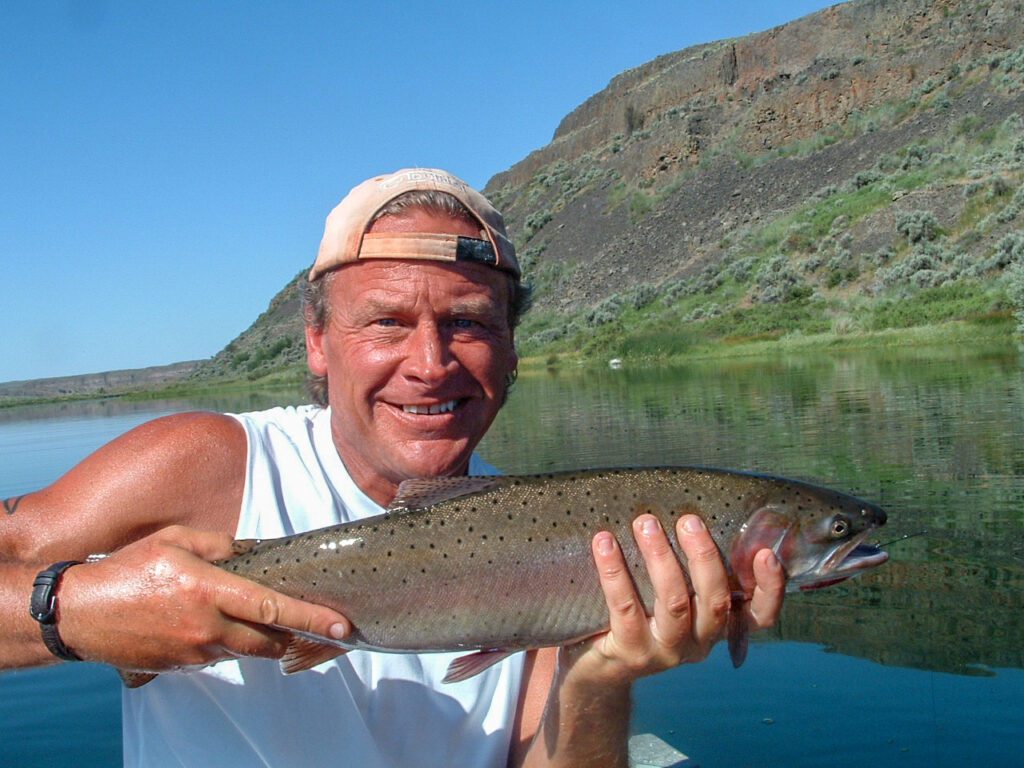
The lake was stocked with rainbows from 1950 to 1960, and in 1956, brook trout were planted. None of these fish survived, so in 1968, they tried the Lahontan’s which did well in the alkaline waters with successful fishing since 1975. A creel census that the tribes conducted from 1975 to 2001, over 26 years of data showed that the average fish caught weighed just under 2 ½ pounds, with most of the fish in the 19 to 20 inch range, but some fish were recorded over 30 inches, including that state record of 18 pounds.
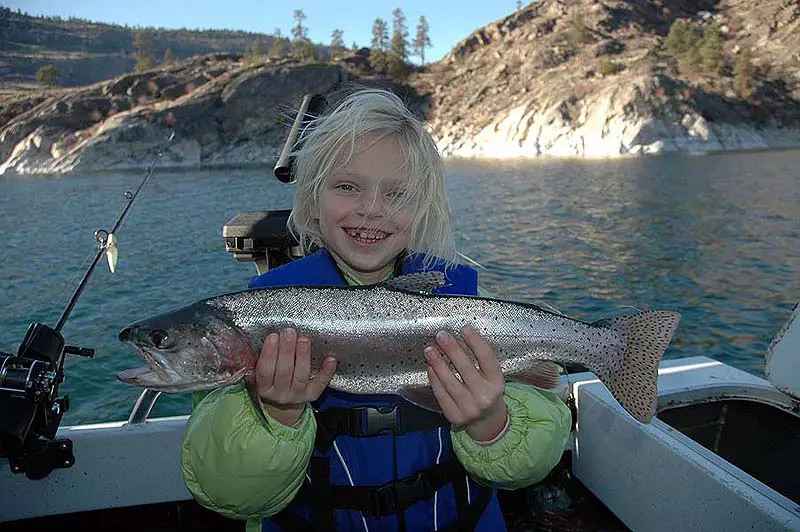
You will need a fishing permit from the tribe. For non-tribal members, the cost is $10 for a single-day use permit, a three-day permit is $20, a seven-day is $30, and the yearly permit is $40. Also, get a copy of the current regulations as it will describe the closed waters, closed shorelines to all access, and also give launch sites that can be used by non-tribal members. There is some camping available, but again, contact the tribe for more information.
Before going to Omak, you should contact the Colville Confederated Tribes Fish and Wildlife Department for current regulations and also where to launch. The Mission Bay launch was recently closed, and other launches are mostly for small watercraft. A launch permit is also needed in addition to a fishing license. The south end of the lake’s shoreline is closed to non-tribal members, and the north end is closed to fishing.
Colville Tribes Fish & Wildlife Department can be contacted at:
Front Desk (509) 634-2110
Main website: https://www.cct-fnw.com/







